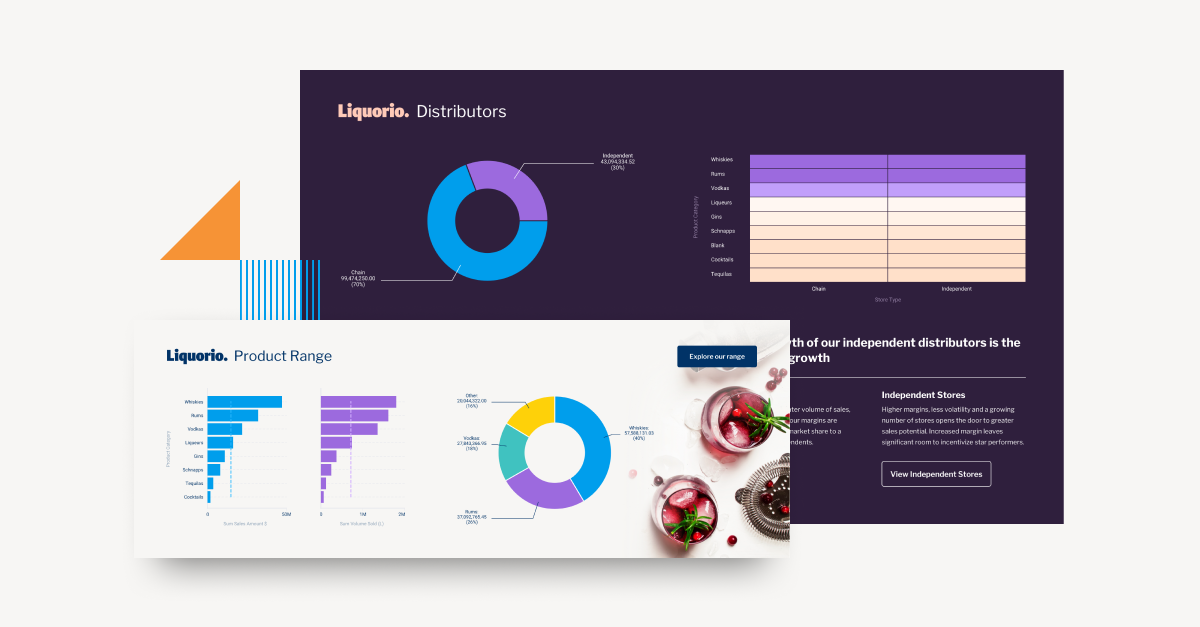CJ Attard Insights
Exploring the latest trends and insights in various industries.
Turning Data into Eye Candy
Transform your data into stunning visuals! Discover tips and tricks to make your analytics pop and captivate your audience.
Transforming Raw Data into Stunning Visuals: A Step-by-Step Guide
Transforming raw data into stunning visuals is a vital skill in today's data-driven world. Whether you're a marketer seeking to present your findings or a data analyst looking to convey insights, understanding the process is crucial. The first step involves collecting your data from reliable sources, ensuring it's accurate and relevant. Once you have your data, clean it by removing duplicates and correcting errors. This step not only enhances the quality of your visuals but also builds trust in your analysis.
Next, it's essential to choose the right visualization tools that cater to your specific needs. Popular options include Tableau, Power BI, and Google Data Studio. After selecting a tool, begin designing your visual by focusing on clarity and simplicity. Use charts, graphs, and infographics that best represent the story behind your data. Remember to prioritize your audience's understanding by avoiding cluttered visuals and employing a consistent color palette. By following these steps, you can effectively transform raw data into engaging and informative visuals.

The Art of Data Visualization: Tips for Making Your Data Pop
The Art of Data Visualization is crucial for transforming complex data sets into easily digestible, visually appealing formats. To make your data pop, start by choosing the right type of visualization that best represents the information you want to convey. Consider using bar charts for comparisons, line graphs for trends over time, or pie charts for showing proportions. Additionally, incorporate color schemes that enhance readability and aesthetics. Remember, often less is more; avoid overcrowding your visuals with excessive information that may confuse the audience.
Moreover, pay attention to the design elements of your visualizations. Ensuring a unified color palette, clear labels, and appropriate font sizes can significantly elevate the impact of your data. Utilize whitespace effectively to give your graphics breathing room and guide the viewer's focus to the essential elements. As a final touch, always consider your audience; tailor your visualizations to their preferences and understanding, as this will make your data more relatable and impactful. By mastering these techniques, you can truly elevate the art of data visualization and capture your audience's attention.
Why Data Visualization Matters: Unlocking Insights Through Eye-Catching Design
Data visualization plays a crucial role in transforming complex datasets into easily digestible formats that can reveal insights at a glance. By using various visual tools such as charts, graphs, and infographics, organizations can convey significant information quickly and effectively. This not only helps to highlight key trends and patterns but also facilitates better decision-making. The right visualization can often elucidate findings that may be buried within raw data, making it imperative for businesses and professionals to embrace eye-catching design as a strategic asset in their data narratives.
Moreover, data visualization matters because it enhances communication and understanding across diverse audiences. When designed effectively, visuals can bridge the gap between technical data analysts and stakeholders by presenting data in an intuitive manner. For instance, well-designed dashboards can allow teams to monitor performance metrics effortlessly. In short, investing time and resources into data visualization not only improves clarity but also drives engagement and promotes a data-driven culture within organizations.